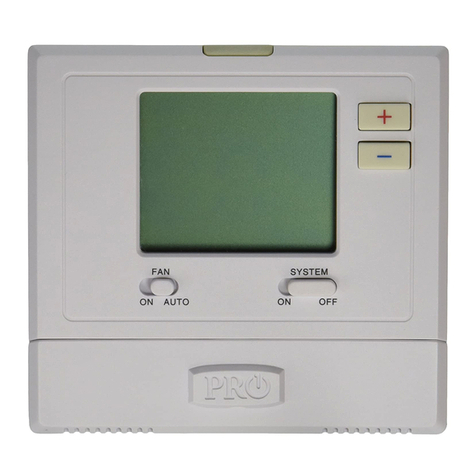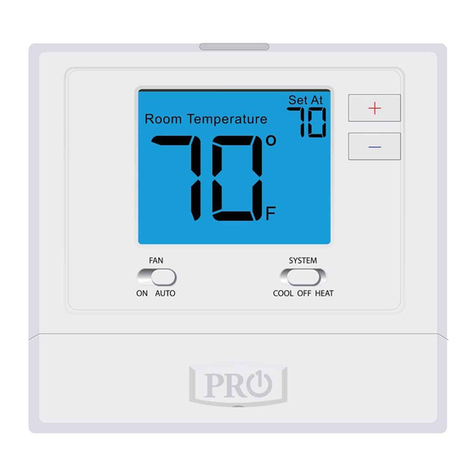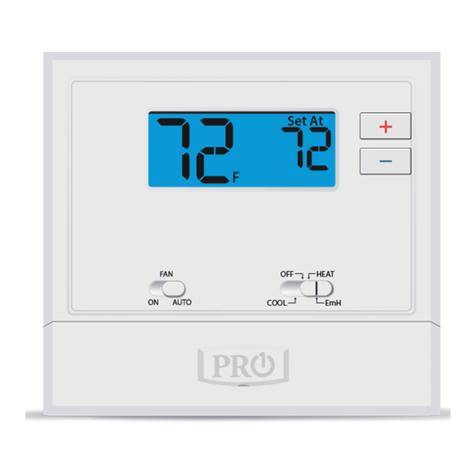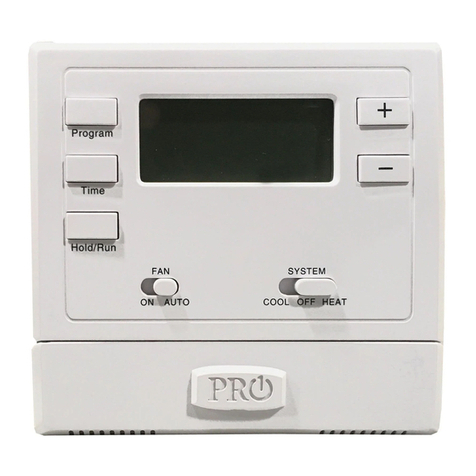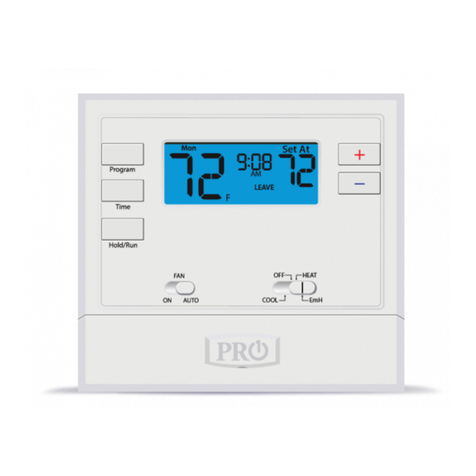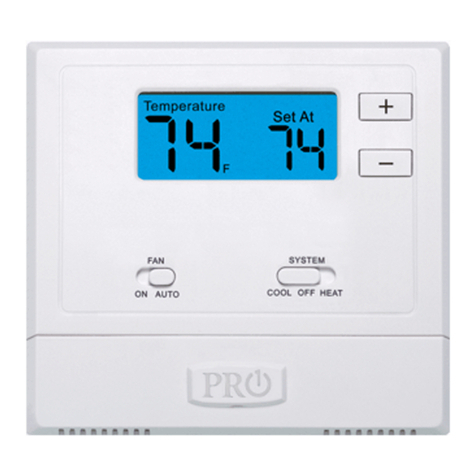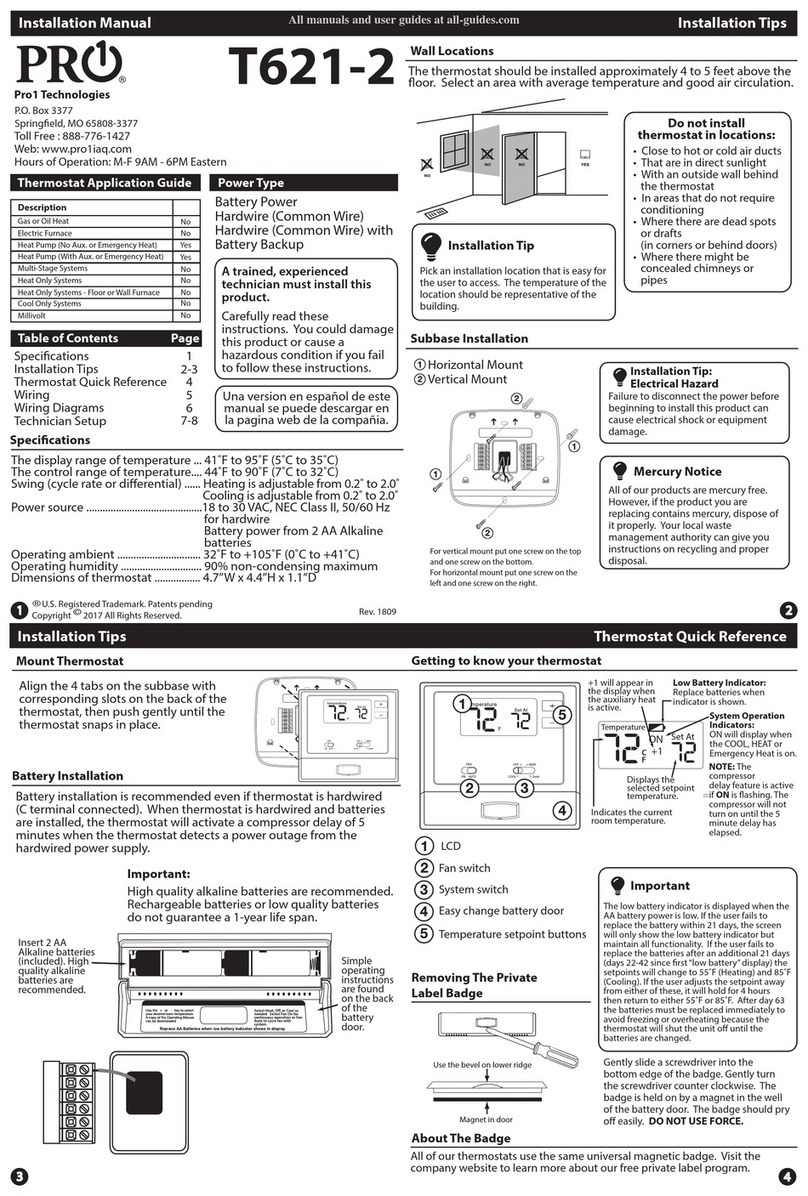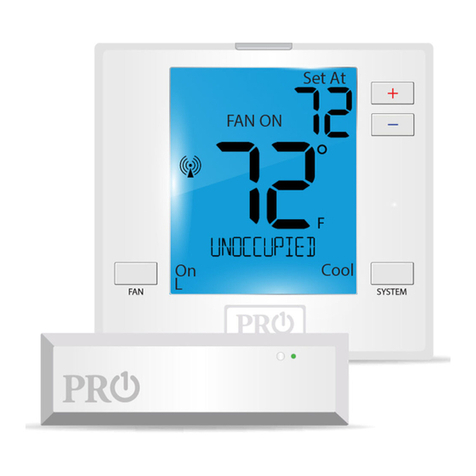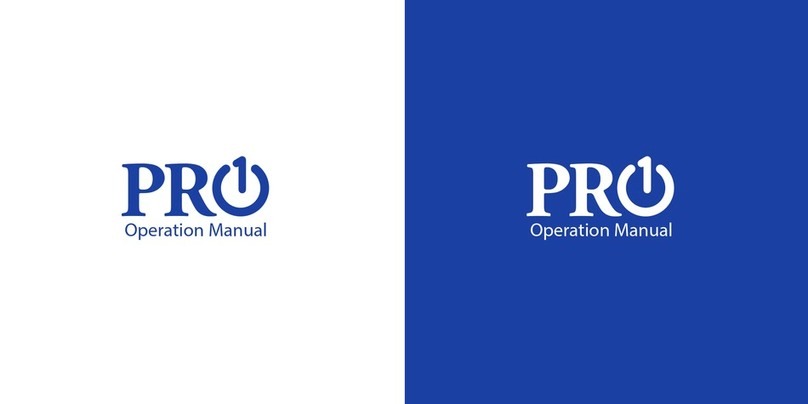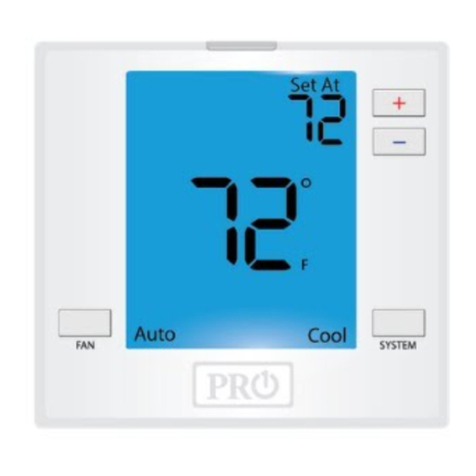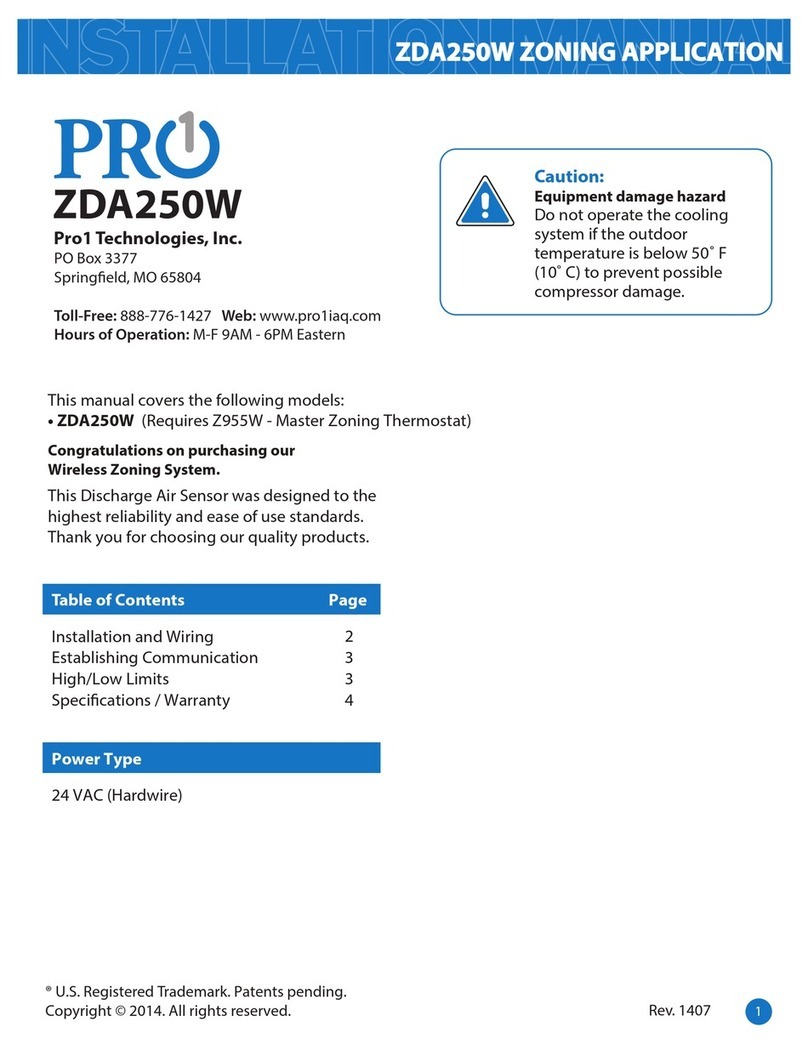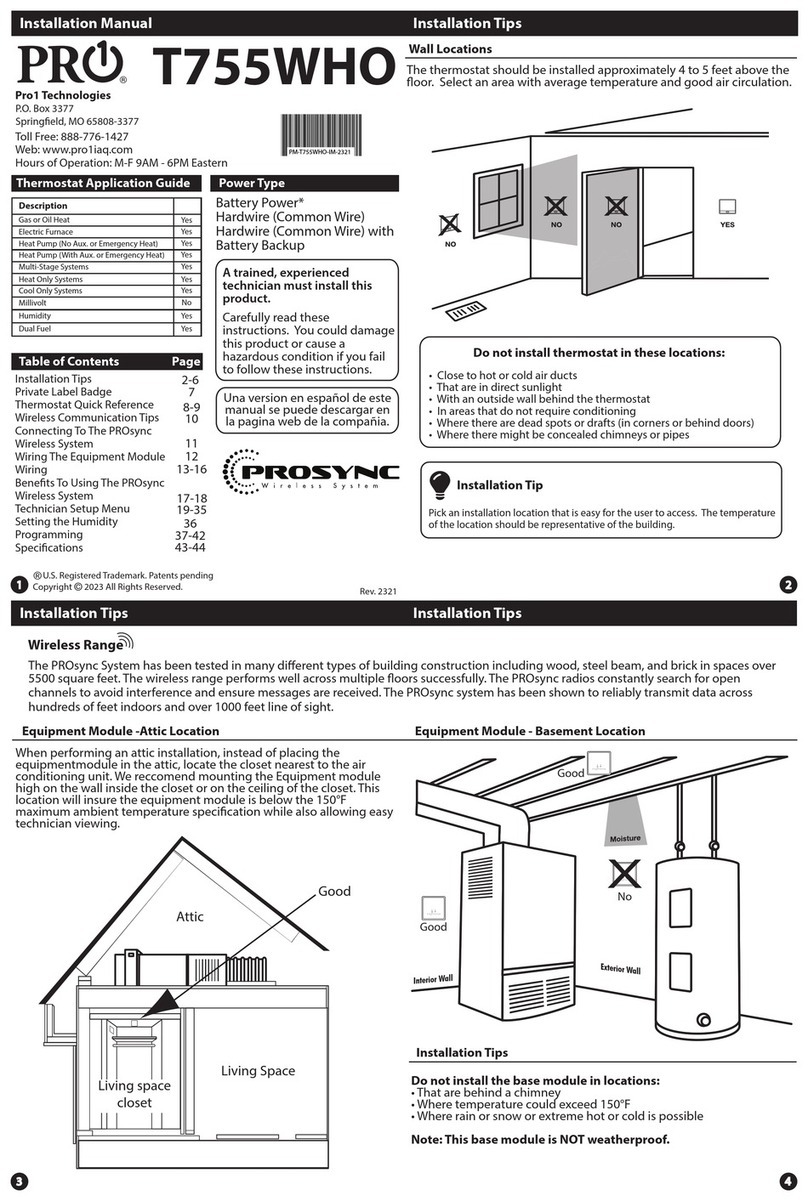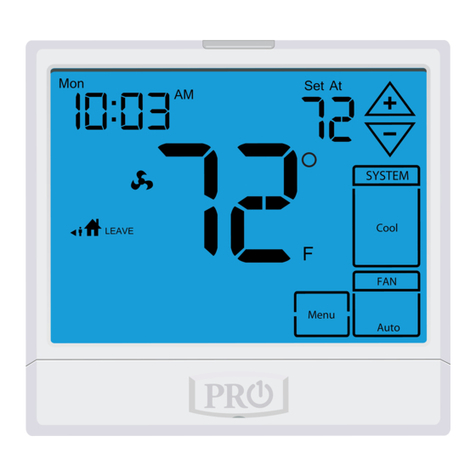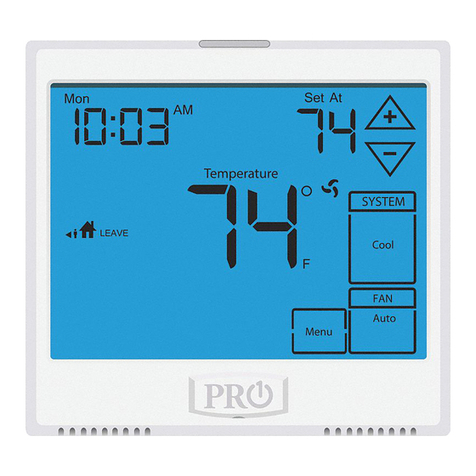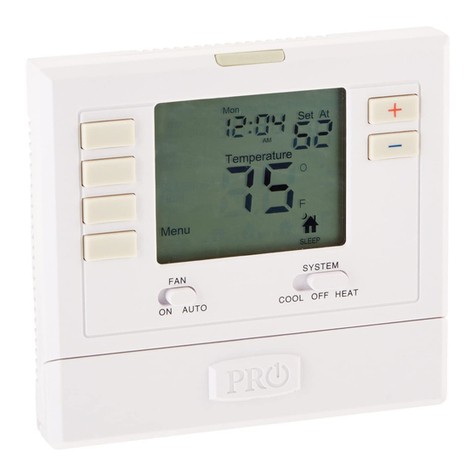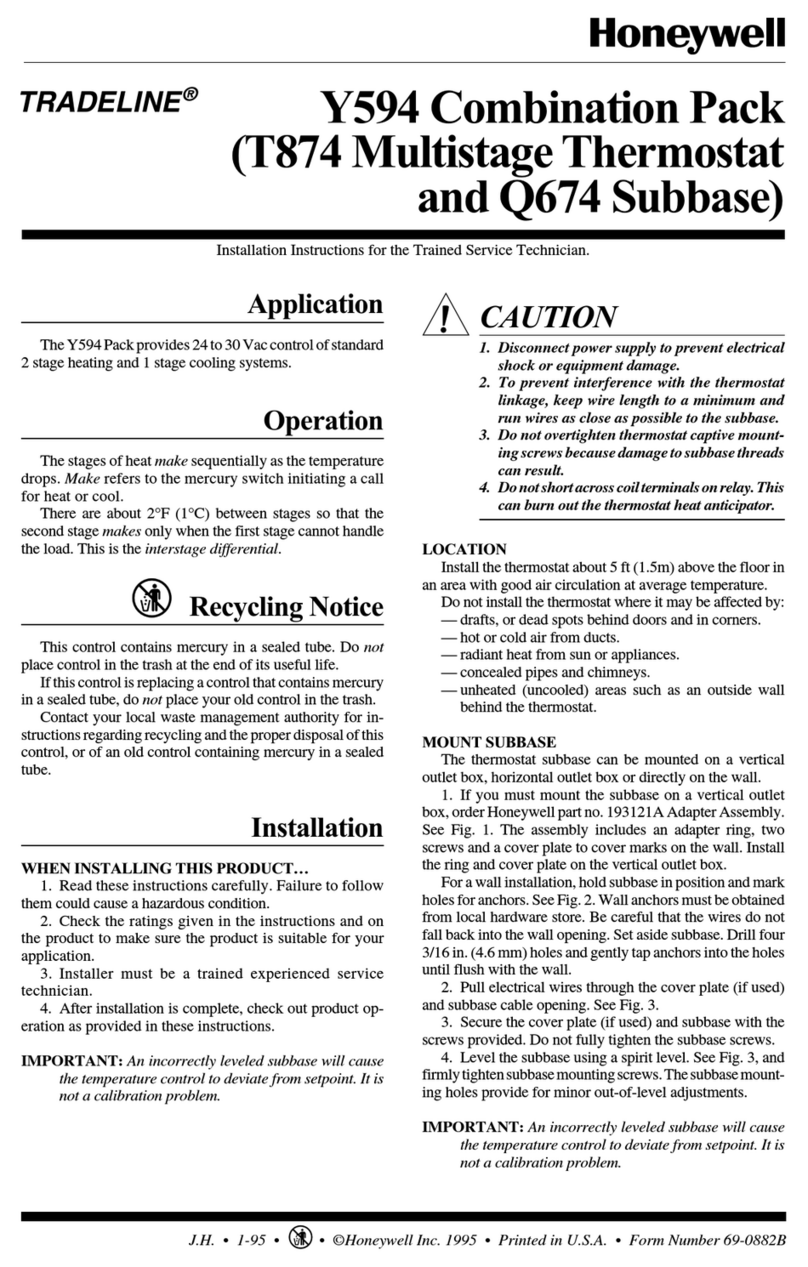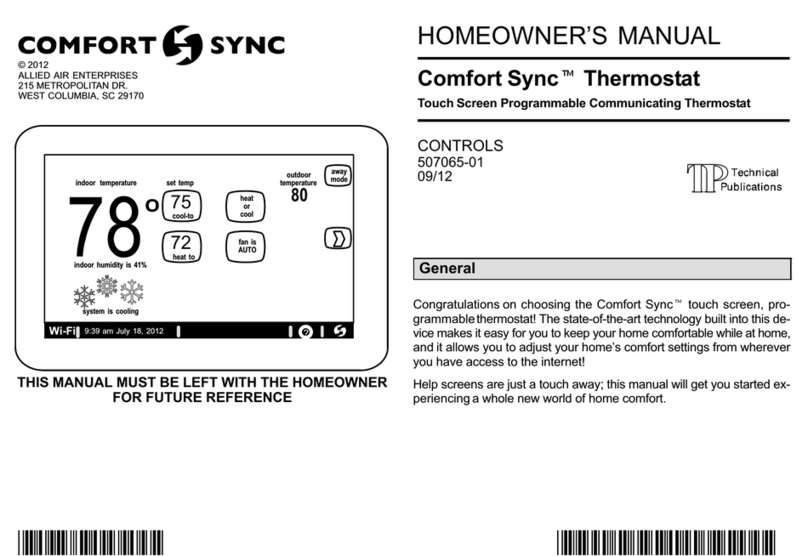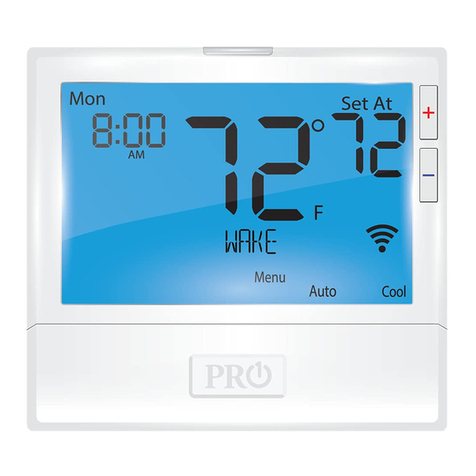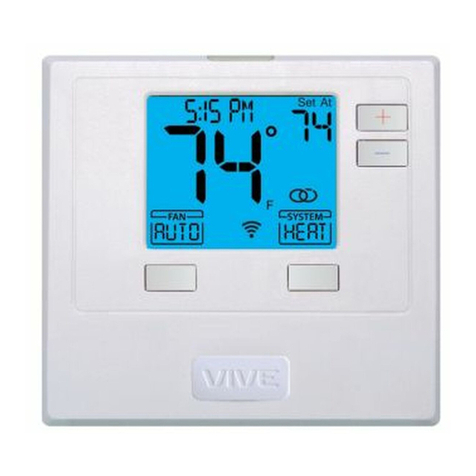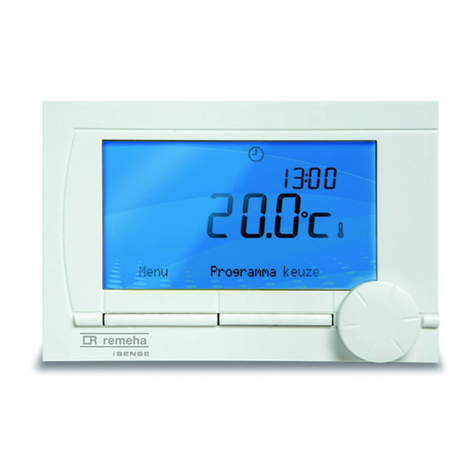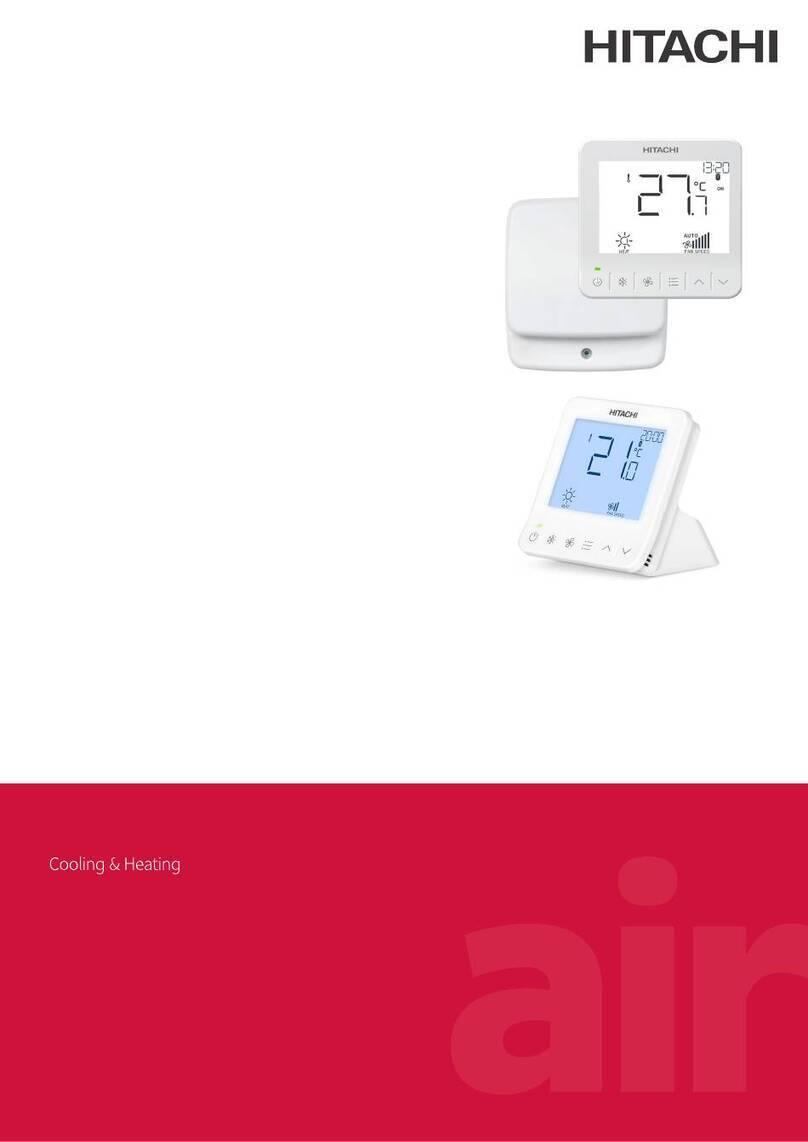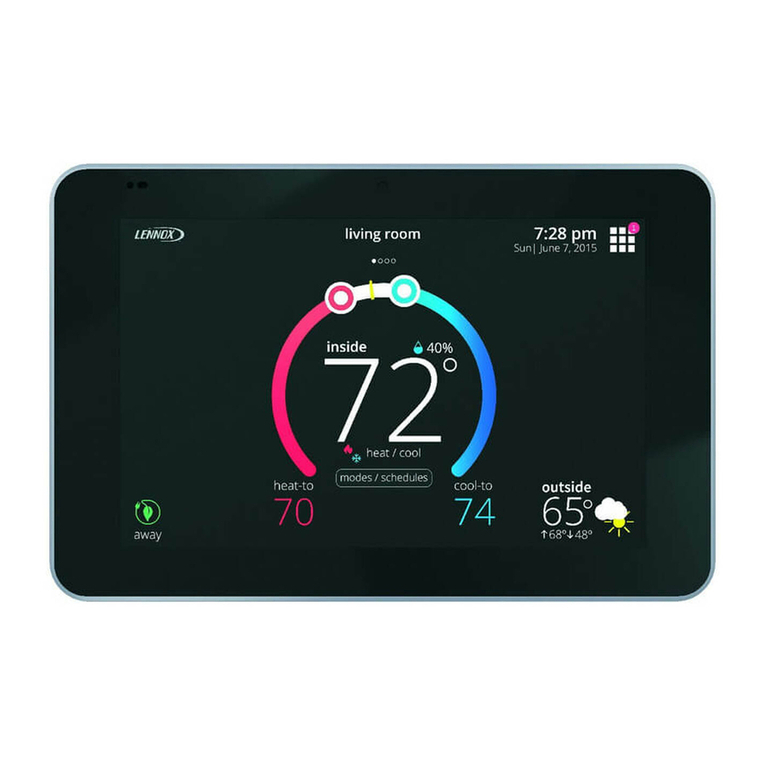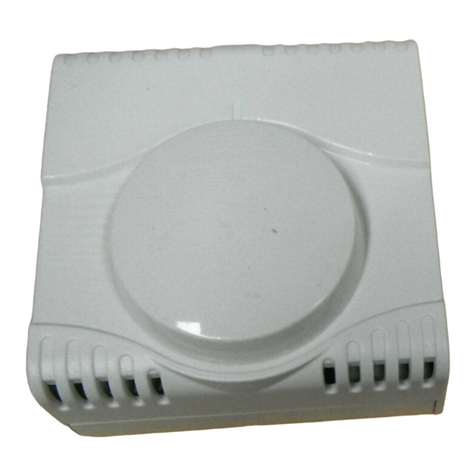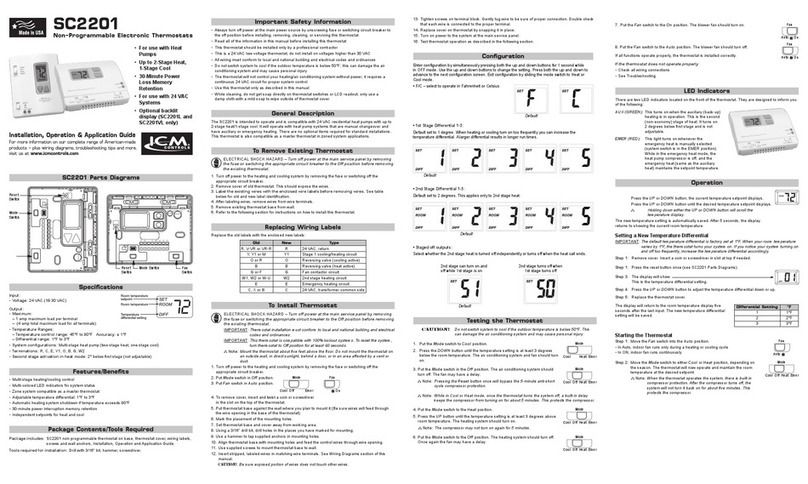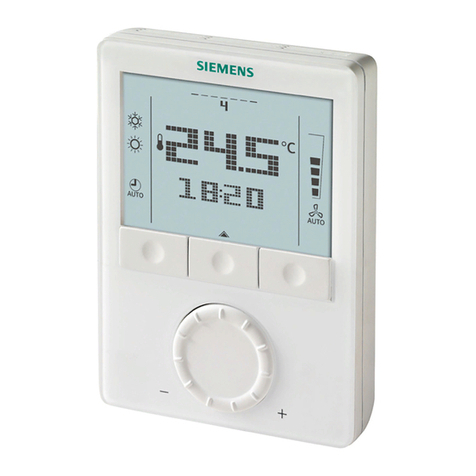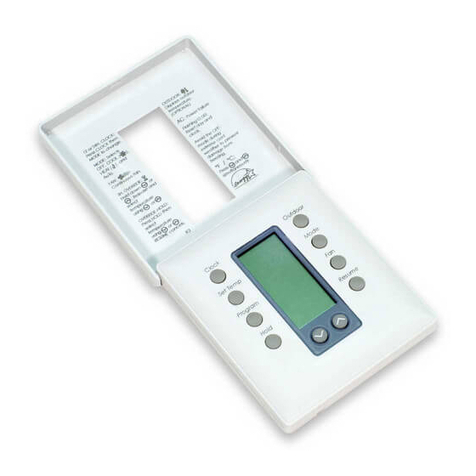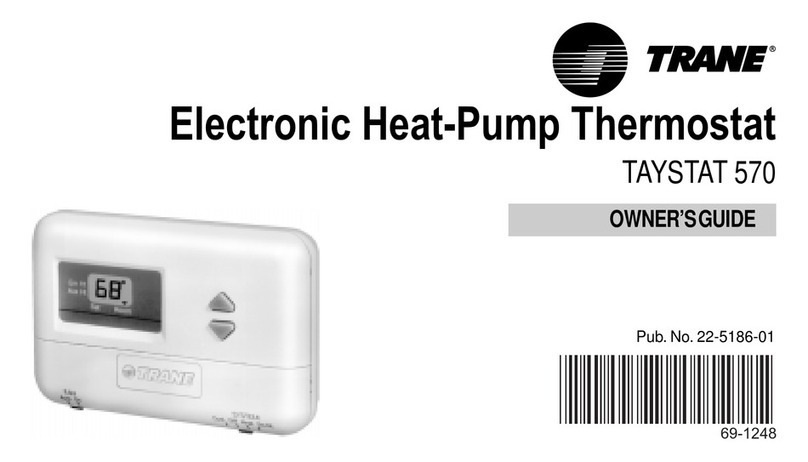
Technician Setup
Select 0 for a changeover valve
that energizes in cooling. Select
b for a change over valve that
energizes in heating.
0 for cooling changeover valve.
b for heating changeover valve.
Change
Over Valve
Selection 0
Tech Setup Steps Adjustment Options Default
LCD Will Show
Fan Operation Setup
Electric: The thermostat
operation jumper pin
should be put in the ELEC
position. This setting
allows the thermostat to
operate the fan during a
call for heat. Most PTAC
systems will require ELEC
Fan Operation Setup.
Important
The RESET button must be pressed after changing any switch or
jumper pin setting. Batteries must be installed for this operation.
Room
Temperature
Calibration
This feature allows the installer
to change the calibration of the
room temperature display. For
example, if the thermostat reads
70˚ and you would like it to read
72˚ then select +2.
0˚F
You can adjust the room
temperature display to read
up to 4˚above or below the
factory calibrated reading.
CA
Caution:
Electrical Hazard
All components of the control
system and the thermostat
installation must conform to Class
II circuits per the NEC Code.
Warning:
Failure to disconnect the power
before beginning to install this
product can cause electrical
shock or equipment damage.
Wiring Tips
C Terminal
The C (common wire) terminal does
not have to be connected when the
thermostat is powered by batteries.
Wire Specications
Use shielded or non-shielded
18-22 gauge thermostat wire.
Terminal
1 Heat 1 Cool
Conventional
System
1 Heat 1 Cool
Heat Pump
System
2 Heat 1 Cool
Heat Pump
System
R
C
B
O
GL
W
Y
Transformer power
(cooling)
Transformer common
Energized in heating
Energized in cooling
Fan Relay, Low
First stage of heat
First stage of cool
Transformer power
(cooling)
Transformer common
Heat pump changeover
valve energized in heating
Fan Relay, Low
N/A
First stage of heat & cool
Heat pump changeover
valve energized in cooling
Transformer power
(cooling)
Transformer common
Heat pump changeover
valve energized in heating
Fan Relay, Low
Second stage of heat
First stage of heat & cool
Heat pump changeover
valve energized in cooling
Do not overtighten
terminal block screws, as
this can damage the
terminal block. A damaged
terminal block can keep
the thermostat from tting
on the subbase correctly
or cause system operation
issues.
Installation Tip
Max Torque = 6in-lbs.
If you are replacing a thermostat,
make note of the terminal
connections on the thermostat that
is being replaced. In some cases
the wiring connections will not be
color coded. For example, the red
wire may not be connected to the
Rterminal.
Loosen the terminal block screws.
Insert wires then retighten terminal
block screws.
1.
2.
Wiring
GH Fan Relay, High Fan Relay, High Fan Relay, High
Wiring
This thermostat is shipped from the factory to operate a conventional
heating and cooling system. This thermostat will also operate a heat
pump system. See the “heat pump”conguration step on page 10 of
this manual to congure the thermostat for heat pump applications.
Gas: For systems that
control the fan during
a call for heat, put the
jumper pin into the GAS
position.
Fahrenheit/Celsius Display
Select F or C with the jumper pin to select desired display.
Compressor Short Cycle Delay
The compressor short cycle delay protects the
compressor from short cycling. This feature will not allow the compressor to
be turned on for 5 minutes after it was last turned o.
Using the jumper on the back of the thermostat, selecting ON will not allow
the compressor to be turned on for 5 minutes after the last time the
compressor was on. Selecting OFF will remove this delay.
Select For Cwith
the jumper pin Reset Button
Select delay ON or OFF with
the jumper pin
0
C0 0
This feature allows you to set a
maximum heat setpoint value.
The setpoint temperature cannot
be raised above this value.
45.0˚ - 90.0˚ F
7.0˚ - 32.0˚ C
Heating
Temperature
Setpoint
Limit
90˚F
HE 90
When turned on the thermostat
will operate a heat pump.
Y will be the rst stage of heat &
cool,W will be the second stage
of heat.
OFF congures the thermostat
for non heat pump systems.
ON congures the thermostat
for heat pump systems.
Heat Pump OFF
HU 0F
This feature allows you to set a
minimum cool setpoint valve.The
setpoint temperature cannot be
lowered below this value.
45.0˚ - 90.0˚ F
7.0˚ - 32.0˚ C
Cooling
Temperature
Setpoint
Limit
45˚F
CL 45
1. Set the thermostat system switch to OFF.
2. To enter Tech Setup Menu, press and hold and together for 3 seconds.
3. Use or to select desired setting for each option.
4. Tap and together to move next option.
5. To exit Tech Setup Menu, move system switch or wait 15 seconds.
Wiring
When connecting the T631-2 to a PTAC, refer to the PTAC manufacturer
instructions to enable remote thermostat operation.
Note:
Technician Setup Menu
Wiring
F
C
Gas
RESET
DELAY
ON OFF
